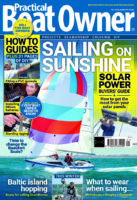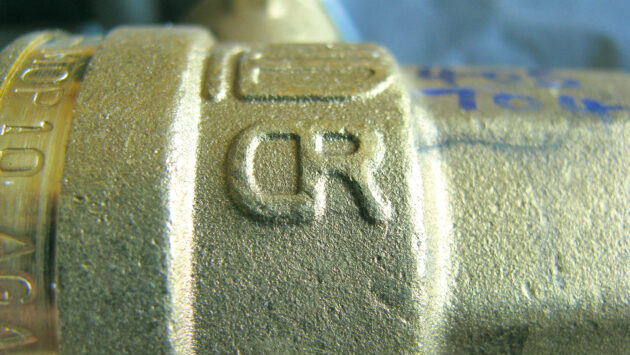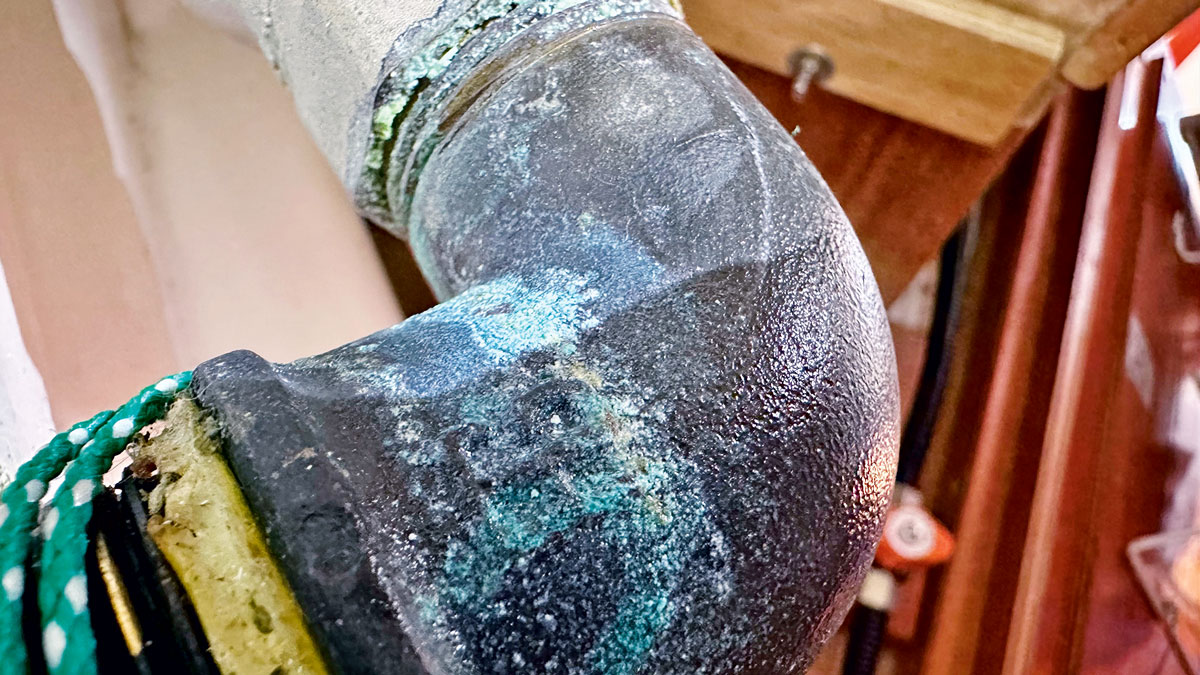Vyv Cox busts the myths surrounding the use of dezincification resistant (DZR) seacock materials.
What exactly does it mean for a material to be dezincification resistant?
Until the relatively recent arrival on the market of plastic seacocks, the essential fittings in boats of all types have been made from three principal metal alloys: stainless steel, bronze and brass.
Stainless steel is less common due to both cost and corrosion difficulties; instead, one of two copper alloys is the first choice of most boatbuilders. This article focuses on these two, with particular emphasis on the most recent form of brass, dezincification resistant brass or, as it is most commonly known, DZR.
Bronze is an alloy of copper and tin, at one time containing 10% tin as gunmetal, but as the cost of this metal has increased, its content has reduced to 7% and 5% in LG4 and LG2.
Valves in these materials should be ideal for seawater service if it were not for two practical problems: the alloy can only be cast, an expensive manufacturing process, and the ball inside the valve, being difficult to manufacture in bronze, is most commonly produced in chromium-plated brass, which tends to pit and corrode in service, leading to seizure.
Hence, most valves, skin fittings and hose tails in boats are made from brass.
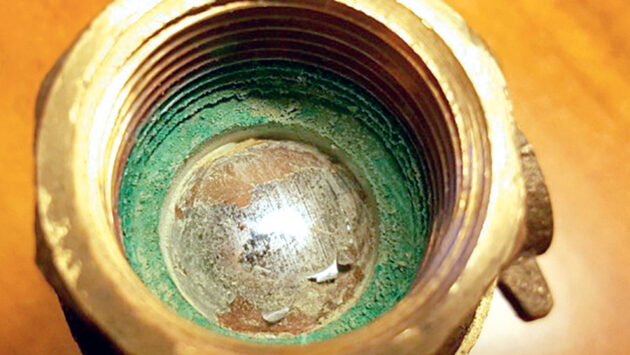
Bronze ball valve with flaked and putted brass ball. Photo: Vyv Cox.
Makeup of brass
Brass is an alloy of copper and zinc, varying in composition from 95/5 to 60/40 (Cu/Zn). 70/30 brass is ductile at ambient temperatures and is widely used as sheet, wire and tubing, but its ductility is less than that of 60/40 at higher temperatures, making it less suitable for high volume production methods.
Fittings for boats are manufactured in 60/40 brass by a process known as hot forging, in which a billet is heated to a temperature between 680°C and 750°C before being pressed with great strength between dies to form its shape. Seacock and domestic fittings made from 60/40 brass dominated the market until it became apparent that failures due to corrosion were occurring in certain waters.
In the United Kingdom, the domestic water supply tends to be divided into two types, known as hard and soft. ‘Hard’ waters are more basic, or alkaline, due to the presence of calcium carbonate, whereas ‘soft’, more acidic, waters are sourced in mountainous areas, mainly in the west and north.
In the late 1970s it was realised that 60/40 brass, variously known as Muntz metal, Tonval and others, was prone to corrosion in areas of soft water, due to a problem known as dezincification, in which the zinc of the brass is leached out of the alloy, leaving a porous and weak network of copper.
Shortly after this, several yacht surveyors realised that fittings in seawater were suffering the same problem, highlighted in Yachting Monthly magazine, which started a campaign to address the issue.
In the late 1970s, the Copper Development Association was engaged by the UK plumbing industry to develop an alloy that could resist this form of corrosion but could still be employed in high-volume production methods.
Their research led to the introduction in 1980 of a modified form of 60/40 brass that we now know as dezincification resistant, to the standard CW602N.
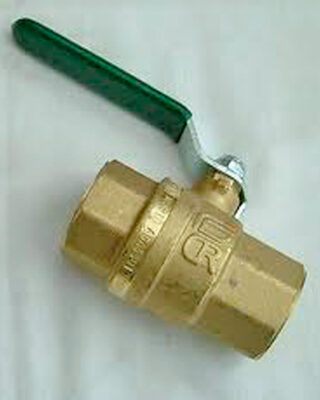
Dezincification resistant brass is used in a whole range of components including ball valves, skin fittings and elbows. Photo: Vyv Cox.
The development of dezincification resistant materials
As we’ve said, brass is an alloy, the two main components of copper and zinc forming a solution when molten, then solidifying in a form known as a solid solution. At zinc contents up to a little more than 30%, the alloy is a single phase known as alpha (α). At higher zinc contents, the alloy consists of two phases, alpha plus beta (α + β), known as duplex.
The zinc-rich β phase has lower corrosion resistance and is preferentially attacked, although, unless inhibited, the α phase may also be attacked.
However, a small addition of arsenic inhibits the dezincification of α brass almost totally for most practical purposes.
Thus, the challenge facing the metallurgists was to develop a single-phase α brass that retained the high-temperature properties of a two-phase α + β brass. The outcome is a leaded brass with a carefully controlled zinc content of about 35% that permits the hot forging and extrusion necessary for the production process in the β range. Heat treatment of up to 6 hours at 500°C followed by slow cooling transforms any residual β phase to α phase so that the finished component is essentially alpha brass.
Dezincification is inhibited by adding arsenic (0.02–0.15%) which protects the α phase. Interestingly, the first known use of arsenic in inhibiting the corrosion of brass was in 1898, in the boilers of the USS Oregon. Iron and manganese impurities are limited to very low levels, as they can prevent the inhibiting function of the arsenic.
Good machinability is assured by adding lead (1.7–2.8%). (A small amount of lead is added to many alloys to provide improved machining; this does not enter solution but is present as discrete inclusions).
Resistance to dezincification is measured using accelerated methods defined in the international standards, such as ISO 6509 and AS 2345. In ISO 6509, samples are immersed in a 1% copper chloride (CuCl2) solution at 75°C for 24 hours, after which the thickness of any dezincification in hot forgings should be less than 200µm (microns) with an average thickness of 100µm. Compliance with this standard assures dezincification resistance in seawater for decades.
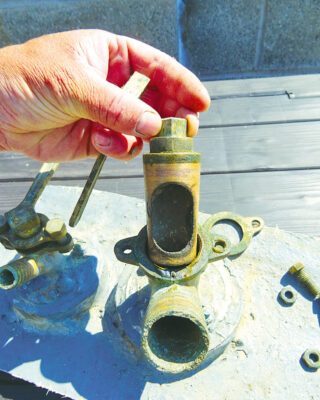
A Blakes seacock with minimal pitting and no sign of dezincification. Photo: Vyv Cox.
Identifying dezincification resistant fittings
The first components to be introduced in dezincification resistant brass were valves, due to their primary market of domestic plumbing. Initially, they were identifiable by the letters CR (corrosion resistant) that were forged into the body.
At this early stage, no skin fittings or hose tails were available in dezincification resistant material, most users selected bronze as substitutes. Although only a small galvanic voltage exists between DZR and bronze, it seems that this combination can cause problems, according to one of the major producers, and it should be avoided if possible.
By the late 1980s, this situation had been addressed by several manufacturers, allowing the fitting of dezincification resistant components for all seawater duties, including skin fittings, elbows, scoops, reducers, etc. All components are marked either CR or DZR.
One identifying feature for components whose provenance is unknown is that standard 60/40 brass valves are almost always zinc or nickel plated, having a silver appearance, whereas no dezincification resistant components are plated.
The metallurgy of Blakes seacocks changed from bronze to DZR shortly after the introduction of the new alloy in the early 1980s and has remained so ever since.
My boat was fitted with three dezincification resistant Blakes seacocks, as built in 1985, and all remain in excellent condition.
The success of the Yachting Monthly campaign can be measured by the decision by several fittings manufacturers to invest in the equipment and techniques necessary to make them in this new material and by the rapid increase in the number of boatbuilders who installed dezincification resistant fittings as standard.
Vyv Cox has sailed for more than 50 years, initially racing dinghies and catamarans, and for the past 25 years, cruising yachts. He is a retired metallurgist and chartered engineer.
Skin fittings and seacocks explained
Surveyor Nick Vass examines the different types of skin fittings and seacocks on the market and shares advice on how…
Why is there a film on the seacocks?
PBO reader Camilla Ransom has found a "strange film" on one of the boat's seacocks. What should she do? Surveyor…
Fitting new seacocks and skin fittings on the PBO Project Boat
Maximus, our PBO Project Boat, had four seacock fittings that need changing – three ball valves in the forepeak (1…
How to replace ageing through-hull fittings
In preparation for an extended voyage, Kerry and Fraser Buchanan replace all below waterline through-hulls with composite fittings
Want to read more articles like this?

A subscription to Practical Boat Owner magazine costs around 40% less than the cover price.
Print and digital editions are available through Magazines Direct – where you can also find the latest deals.
PBO is packed with information to help you get the most from boat ownership – whether sail or power.
-
-
-
- Take your DIY skills to the next level with trusted advice on boat maintenance and repairs
- Impartial, in-depth gear reviews
- Practical cruising tips for making the most of your time afloat
-
-
Follow us on Facebook, Instagram, TikTok and Twitter

